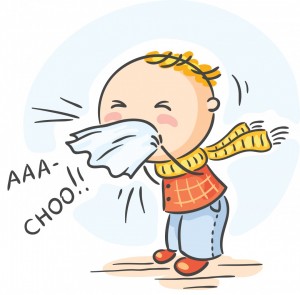Top 10 considerations for Cold/Flu Season! – By: Dr. Nicole Cerf BSc, ND
We all know the saying ‘An Ounce of Prevention is Worth a Pound of Cure’. Here are the top 10 considerations to protect against colds and flus this season!
- Sleep
A lack of sleep impairs many processes in the body, including the immune system. Research has shown that deep, restorative sleep (~7.5 hours/night) is needed to maintain a healthy immune system…so keep getting those ZZZ’s!
- Regular exercise
Moderate exercise for 20-30 minutes 3-5 times per week can strengthen the immune system. Avoid heavy, exhaustive exercise as this can depress the immune system and increase susceptibility to infection.
- Decrease Sugar Consumption
Over consumption of simple carbohydrates and sugars can interfere with the immune system’s ability to function optimally. Fun Fact = 8 tablespoons of sugar is known to knock out your immune system for up to 5 hours1.
- Stay Hydrated
Water helps to hydrate tissues and flush out any toxins. It also helps in the production of lymph, which circulates white blood cells and other needed nutrients to help combat infections.
- Supplements
Vitamins and minerals such as zinc, selenium, vitamin A, vitamin C, vitamin D, and vitamin E are all supportive to the immune system.
- Herbs
Elderberry extract has been shown to relieve flu symptoms an average of 4 days earlier compared with placebo2. Green tea and Echinacea are also well-researched herbs that help relieve flu symptoms.
- Spices
Garlic is a potent natural antimicrobial against bacteria, viruses, and fungi. Ginger contains powerful anti-inflammatory properties to help ward off infections and illness. Cayenne promotes vasodilation, which helps to clear congested sinuses and alleviate cold/flu symptoms.
- Decrease Body Acidity
When the body chemistry becomes too acidic, it creates an environment that is more favorable for fungi, bacteria, and viruses to grow. Consuming alkaline fruits and vegetables on a daily basis will help decrease acid levels in the body.
- Probiotics
The digestive tract is the main route for nutrients to come into your body. A healthy digestive tract ensures your body is able to absorb the nutrients needed for a strong immune system. Probiotics help in the maintenance of a healthy digestive tract.
- Hygiene
Washing hands with soap and water throughout the day, before and after preparing foods, after using the washroom, and keeping hands away from the face will decrease exposure to pathogens.
Immune Boosting Soup
Items needed:
- 10 cups distilled water
- ½ lemon
- 2-3 tablespoons of fresh ginger root (slice up into medium pieces)
- 5-6 crushed garlic cloves (crush with flat end of knife – no need to cut up)
- ¼ to ½ tsp cayenne pepper (to taste)
- 1 astragalus root strip
- ½ tsp thyme
- ½ tsp sage
- 6 cups vegetables cut into bite-sized pieces (carrots, celery, potatoes, squash, tomatoes, string beans, zucchini, yams, etc)
- Gluten-free pasta (optional)
*Purchase organic when possible
Instructions:
- Add water in a medium saucepan.
- Add juiced lemon, ginger root, crushed garlic cloves, thyme, sage, and astragalus root strip.
- Bring to a boil and then reduce to a simmer (medium heat). Allow it to cook for about 20-30 minutes. The liquid will become darker in color and fragrant.
- Add cayenne pepper.
- Strain out the herbs and discard contents, keeping the resulting liquid for broth.
- Add vegetables and pasta to the broth and simmer slowly for 1 hour. Enjoy!
1) Albert Sanchez, J. L. Reeser, H. S. Lau, P. Y. Yahiku, R. E. Willard, P. J. McMillan, S. Y. Cho, A. R. Magie, and U. D. Register. Role of sugars in human neutrophilic phagocytosis. Am J Clin Nutr November 1973, vol. 26 no. 11 1180-1184
2) Zakay-Rones Z, Thom E, Wollan T, Wadstein J. Randomized study of the efficacy and safety of oral elderberry extract in the treatment of influenza A and B virus infections. J Int Med Res. 2004 Mar-Apr;32(2):132-40.


